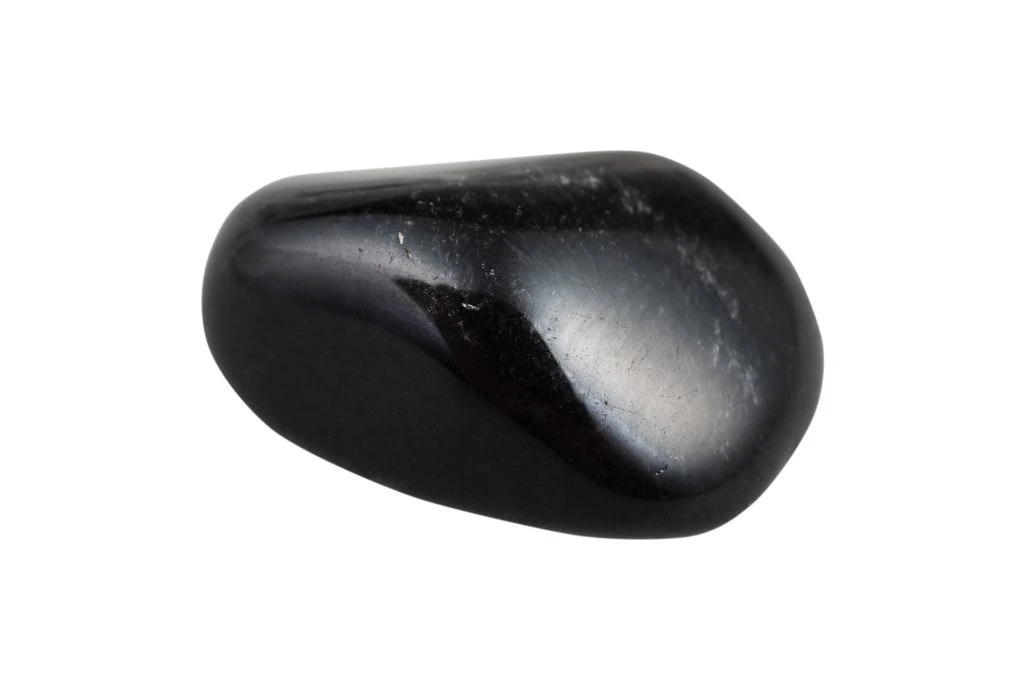Color and Appearance
Black Obsidian is a naturally occurring volcanic glass with a distinctive jet-black color. This striking hue is a result of its high iron and magnesium content. The crystal’s appearance is characterized by its smooth, glossy surface that reflects light, giving it a mirror-like quality. When polished, Black Obsidian exhibits a vitreous luster that enhances its sleek and elegant look.
Structure and Composition
As an igneous rock, Black Obsidian forms from rapidly cooling lava, which prevents crystallization. This process results in a homogeneous, amorphous structure with no regular atomic arrangement. The lack of crystalline structure contributes to its glass-like appearance and smooth texture. Black Obsidian is primarily composed of silicon dioxide, with trace amounts of other minerals that contribute to its deep black coloration.
Physical Characteristics
Black Obsidian is known for its hardness, ranking between 5 and 5.5 on the Mohs scale. This makes it relatively durable, though it can be brittle and prone to chipping if handled roughly. The stone typically forms in rounded nodules or angular fragments with sharp edges. When fractured, Black Obsidian exhibits a characteristic conchoidal fracture pattern, producing smooth, curved surfaces reminiscent of shell fragments.
Unique Features
One of the most notable features of Black Obsidian is its ability to be fashioned into extremely sharp edges. This property made it a valuable material for ancient tools and weapons. Some specimens may display iridescent sheens or colorful flashes known as “fire obsidian” when light hits them at certain angles. Additionally, certain varieties of Black Obsidian, such as Apache Tears, occur as small, rounded pebbles with a more opaque appearance, adding to the diversity of this intriguing volcanic glass.
Historical and Cultural Significance of Black Obsidian
Black Obsidian has been revered by various cultures throughout history. Ancient Mesoamerican civilizations, including the Aztecs and Maya, used this volcanic glass to create tools, weapons, and ceremonial objects. In these cultures, Black Obsidian was associated with power, protection, and divination. The Aztecs believed it held the power to ward off evil spirits and used it in rituals and sacred ceremonies.
Metaphysical Associations
In metaphysical circles, Black Obsidian is renowned for its grounding and protective properties. It is often referred to as a “psychic vacuum cleaner” due to its believed ability to absorb and dispel negative energies. Many practitioners associate this stone with truth-seeking, inner strength, and self-reflection. It is thought to help bring hidden thoughts, feelings, and patterns to the surface, facilitating personal growth and emotional healing.
Common Uses and Benefits
Black Obsidian is widely used in crystal healing practices and modern spiritual rituals. It is often shaped into spheres or scrying mirrors for divination purposes. Many people carry Black Obsidian as a protective talisman or place it in their homes to create a psychic shield. In meditation, it is believed to enhance focus and clarity of mind. Some alternative healers use it to assist in releasing emotional blockages and trauma. Additionally, Black Obsidian is popular in jewelry making, where it is worn for both its aesthetic appeal and perceived metaphysical benefits.
Modern Applications
Beyond its spiritual uses, Black Obsidian has found applications in modern industries. Its sharp edges make it useful in surgical scalpels, where it can produce a finer incision than steel. In architecture and interior design, polished Black Obsidian is sometimes used as a decorative element, prized for its sleek, reflective surface. Its unique formation process also makes it valuable to geologists studying volcanic activity and the Earth’s crust.

